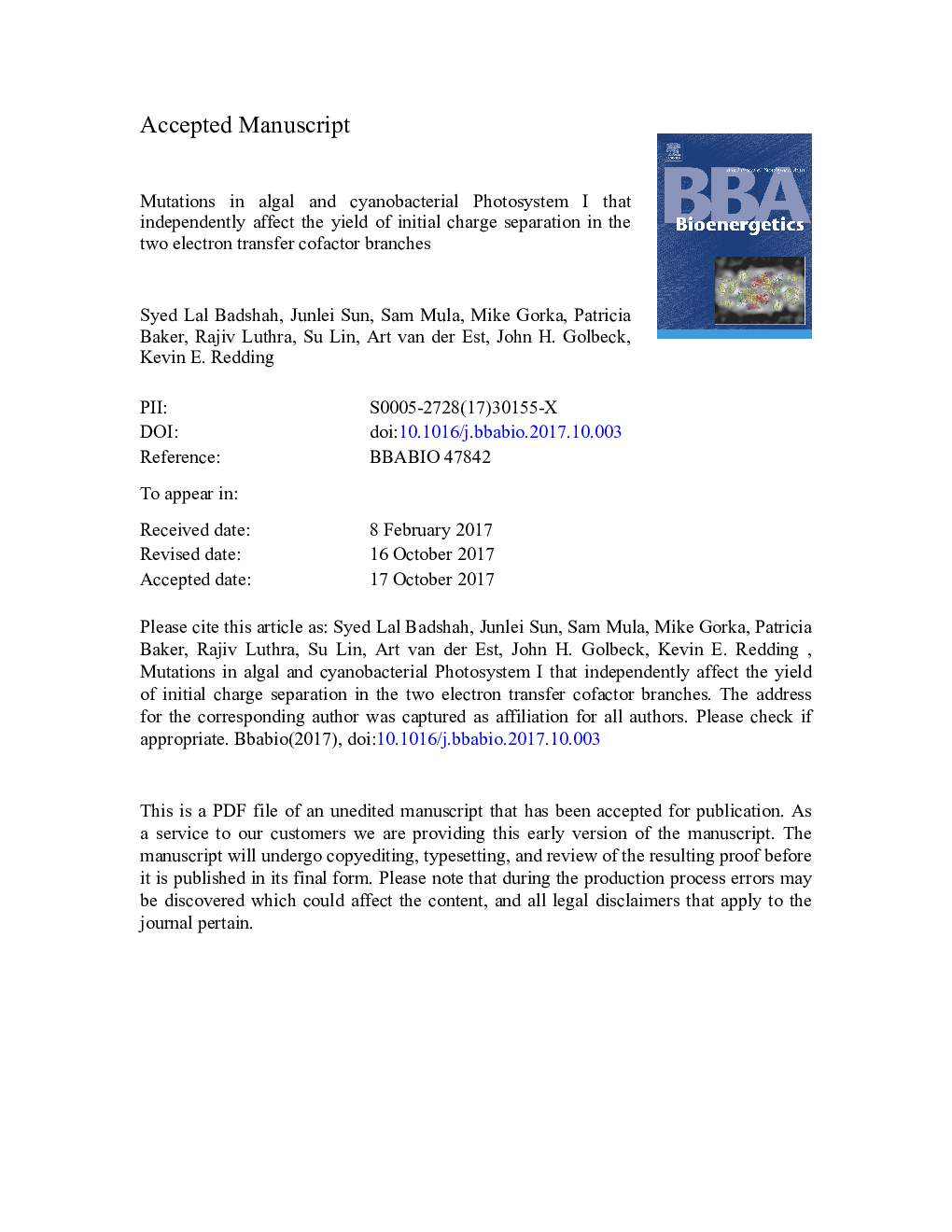| Article ID | Journal | Published Year | Pages | File Type |
|---|---|---|---|---|
| 8298703 | Biochimica et Biophysica Acta (BBA) - Bioenergetics | 2018 | 53 Pages |
Abstract
In Photosystem I, light-induced electron transfer can occur in either of two symmetry-related branches of cofactors, each of which is composed of a pair of chlorophylls (ec2A/ec3A or ec2B/ec3B) and a phylloquinone (PhQA or PhQB). The axial ligand to the central Mg2Â + of the ec2A and ec2B chlorophylls is a water molecule that is also H-bonded to a nearby Asn residue. Here, we investigate the importance of this interaction for charge separation by converting each of the Asn residues to a Leu in the green alga, Chlamydomonas reinhardtii, and the cyanobacterium, Synechocystis sp. PCC6803, and studying the energy and electron transfer using time-resolved optical and EPR spectroscopy. Nanosecond transient absorbance measurements of the PhQ to FX electron transfer show that in both species, the PsaA-N604L mutation (near ec2B) results in a ~Â 50% reduction in the amount of electron transfer in the B-branch, while the PsaB-N591L mutation (near ec2A) results in a ~Â 70% reduction in the amount of electron transfer in the A-branch. A diminished quantum yield of P700+Â PhQâ is also observed in ultrafast optical experiments, but the lower yield does not appear to be a consequence of charge recombination in the nanosecond or microsecond timescales. The most significant finding is that the yield of electron transfer in the unaffected branch did not increase to compensate for the lower yield in the affected branch. Hence, each branch of the reaction center appears to operate independently of the other in carrying out light-induced charge separation.
Keywords
Related Topics
Life Sciences
Agricultural and Biological Sciences
Plant Science
Authors
Syed Lal Badshah, Junlei Sun, Sam Mula, Mike Gorka, Patricia Baker, Rajiv Luthra, Su Lin, Art van der Est, John H. Golbeck, Kevin E. Redding,
